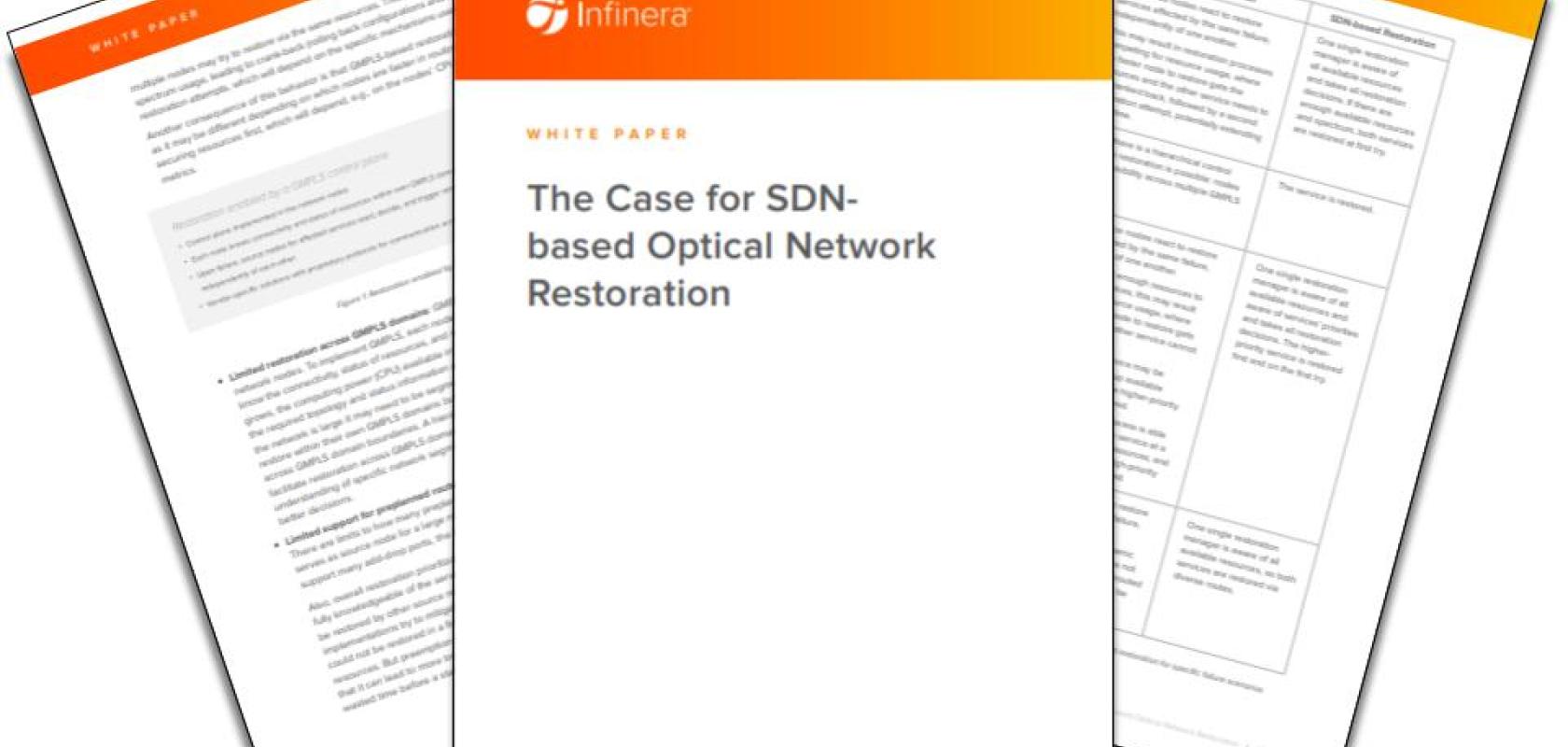The case for SDN-based optical network restoration

The Case for SDN-based Optical Network Restoration - An Infinera White Paper
This White Paper outlines an improved approach to optical network restoration, based on an SDN control plane. This approach aligns with current networking trends, including IP traffic offloading from the OTN layer, adoption of network layer disaggregation, and increased network automation.
The importance of network resilience is growing as telecommunications infrastructure becomes critical to an increasing number of use cases in our modern world. But optical network failures continue to occur due to various challenges, from equipment failures to natural phenomena like hurricanes or earthquakes, to human errors such as negligent construction work, and even to malicious attacks.
While optical network failures can be minimised, they cannot be fully avoided. Network operators continue to look for cost-effective solutions that ensure high service availability upon failure. Restoration is one approach. Most of the optical restoration solutions in the market today perform restoration either at Layer 0 (L0, DWDM layer) or at Layer 1 (L1, OTN layer), implemented via a control plane, GMPLS. As networks evolve toward all IP, with the use of circuit-style switching for transparent services, coupled with best-efforts services, restoration at Layer 3 (L3) will become more widely used.
This White Paper proposes an improved approach to optical network restoration, prioritising restoration at L0 while also supporting it at L1 and complementing L3 restoration in IP-optical networks. The restoration approach proposed in this paper is based on a software-defined network (SDN) control plane and is aligned with current networking trends, including: IP traffic offloading from the OTN layer, leading to rapid growth of high-speed IP and wavelength services; adoption of network layer disaggregation, including IPoDWDM deployments, where coherent optical pluggables are equipped in routers, switches, or other packet platforms and connected directly to DWDM open line systems; and increased network automation.
Who should read this White Paper?
This White Paper is essential reading for telecommunications professionals and decision-makers responsible for network architecture, operations, and resiliency. Designed for CTOs, network architects, and engineering managers, it also serves as a valuable resource for professionals in planning, operations, and R&D within telecommunications and service provider companies.
What does this White Paper contain?
This comprehensive white paper covers:
- The growing demand for resilient networks: Insight into why network failures are inevitable and how the need for resilient optical networks is rapidly increasing.
- Protection vs. restoration: A deep dive into protection and restoration strategies, comparing cost, response time, and reliability.
- Limitations of traditional approaches: An overview of the limitations in current optical restoration methods (Layer 0 and Layer 1), focusing on factors like restoration conflicts, cross-domain inefficiencies, and single-vendor restrictions.
- The advantages of SDN-based network restoration: How SDN enhances network resilience through real-time monitoring, dynamic routing, and multi-vendor support, enabling seamless restoration across Layer 0 and Layer 1.

